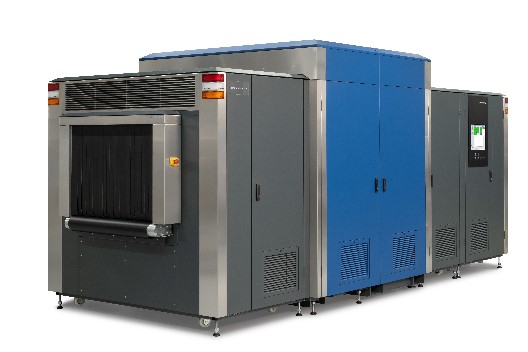At an airport, every piece of luggage, whether carry-on or check-in, must thoroughly be screened for weapons, explosives and narcotics. As a world leader in detection technologies for aviation, ports, borders, urban security and defense, Smiths Detection equips many of the world's airports with X-ray scanners, enabling them to quickly and reliably identify objects.
From X-ray transmission to diffraction
Traditionally, these devices use transmission imaging.
“This involves emitting photons via X-ray sources and using detectors to observe those that have made it through the object,”
explains Loïck Verger, Partnership Manager for X-ray and Gamma-Ray Imaging Systems at CEA-Leti. "Subsequent data processing then allows to recreate a 2D or 3D contrast image of the object."
Nevertheless, the information provided by such a scanner is not always sufficient to accurately determine the nature of an object. For example, two different liquids with similar densities are likely to be displayed in the same way. When in doubt, airport security operators have to open the baggage and carry out a manual check, which is time-consuming and increases the risk of human error. These limitations can be overcome by analyzing X-ray diffraction signals at small angles measured by innovative spectrometric detectors.
“Among the photons emitted, some will ‘bounce’ off objects and have their trajectory deviated by a small angle without losing energy,”
explains Loïck Verger. "This information is characteristic of the material they pass through. Consequently, by correctly detecting these photons and accurately measuring their energy at given angles, it is possible to deduce the molecular signature that characterizes their interatomic distances."
This information is more precise than that provided by transmission imaging and makes it possible to rapidly examine a piece of luggage without having to immobilize and open it.

The new SDX 10060 XDi scanner made its world debut at the Passenger Terminal Expo, April 16-18, 2024, in Frankfurt.
A detection module developed by CEA-Leti
Smiths Detection joined forces with CEA-Leti to implement this innovation in its products. The collaboration began in 2010 and has recently led to the launch of a new scanner, the
SDX 10060 XDi, which is based on X-ray diffraction.
“The detection module we simulated, integrated, tested and transferred to Smiths Detection consists of a CdZnTe semiconductor detector operating at room temperature, an ‘ASIC’ (an integrated circuit used to extract very weak signals) originally developed by CEA-Irfu for astrophysics, and a specialized signal processing solution,”
describes Loïck Verger.
Each scanner is equipped with several detection modules as well as information processing algorithms and X-ray generators. Designed to pass the most stringent certifications for the detection of illicit substances, this equipment is now on the market.

CEA-Leti detection module with a CdZnTe semiconductor detector, an ASIC and signal processing capabilities.
The detector technology was developed by CEA and is protected by fifteen patents. It was transferred to Smiths Detection as part of a licensing agreement.
“This detector technology enabled us to realize a new scanner geometry allowing for faster scanning speeds at significantly lower system and maintenance costs than would have been possible with cryogenic-detectors,”
says Jens-Peter Schlomka, Head of R&D for diffraction at Smiths Detection.
However, its application is not limited to airport security but can be extended to the medical sector. CEA-Leti is considering the use of this technology in molecular imaging, in particular for theranostics - a new medical approach aimed at the simultaneous development of diagnostic and therapeutic applications in nuclear medicine.
"While these applications have nothing in common, they are based on the same principle: a semiconductor detector combined with an ASIC integrated circuit and signal processing capabilities," concludes Loïck Verger.